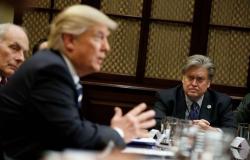June 5, 2024 marks a historic date for space exploration with the takeoff of Boeing’s Starliner capsule to transport astronauts to the International Space Station (ISS). This inaugural flight, carried out from Launch Complex 41 at Cape Canaveral, symbolizes nearly two decades of preparation to integrate commercial vehicles into NASA’s manned space missions.
Better late than never
Aboard the Starliner are veteran NASA astronauts Barry “Butch” Wilmore and Sunita Williams, who together have more than 11,000 flight hours as former US Navy test pilots. The launch, carried out at 10:52 a.m. EDT (4:52 p.m. Paris time), also marks a first for the United Launch Alliance (ULA) Atlas V rocket which transports astronauts for the first time in 22 years of operations.
The road to this launch has not been without obstacles. Initially scheduled for May 6, the flight was delayed several times due to technical problems. A faulty valve on the upper stage of the Atlas V initially led to a first cancellation a few hours before launch and required complex repairs. A helium leak and a power outage then delayed subsequent attempts.
Docking with the ISS is scheduled for this Thursday, June 6 around 6:15 p.m. (Paris time).
The objectives of the mission
This mission, known as Crew Flight Test (CFT), is crucial for the certification of Starliner for regular manned missions. Wilmore and Williams will pass about eight days aboard the ISS and will subject the capsule to a series of rigorous tests. They will perform manual maneuvers, test emergency scenarios and conduct debriefings to ensure the Starliner capsule is ready for longer operational missions.
If the CFT is a success, Starliner could then carry out its first crewed operational mission in 2025. This mission, named Starliner-1, is expected to carry NASA astronauts Mike Fincke and Scott Tingle, as well as Canadian astronaut Josh Kutryk.
From then on, NASA’s commercial crew program, which began with the commercial cargo program in 2006, will include two manned space vehicles independent of traditional government systems: Boeing’s Starliner and SpaceX’s Crew Dragon. These two companies were awarded major contracts in 2014 to finalize the development of their respective capsules. The goal was to no longer depend on the Russians since the withdrawal of the American space shuttles in 2011.
For its part, Russia will continue to send cosmonaut crews with its Soyuz spacecraft until at least 2028, when the country’s commitment to the partnership expires.






